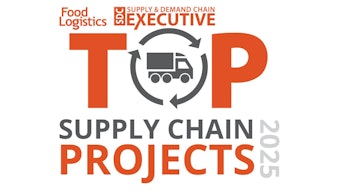
Less than two weeks after assuming office, on Feb. 1, President Donald Trump imposed “a 25% additional tariff on imports from Canada and Mexico and a 10% additional tariff on imports from China,” with a lower 10% rate on Canadian energy resources. While these tariffs have now been twice delayed, on March 12, Trump implemented a blanket 25% tariff on all steel and aluminum imports into the United States, which is the first tariff to affect the European Union since Trump’s return to the White House.
While the news is quickly developing regarding tariffs, it is important to understand potential legal challenges and practical implications of these tariffs. The proposed tariffs would apply to all imports from the targeted countries, including goods as ubiquitous as steel, energy resources and raw materials such as lumber.
Challenges to the legality of announced tariffs
Affected countries and private stakeholders will likely challenge the legality of these tariffs. China plans to challenge the tariffs in the World Trade Organization, though this will not provide short-term relief. In the short term, numerous governments have announced retaliatory tariffs on U.S. imports. Officials from Mexico described the announced tariffs as a “flagrant violation” of the U.S.-Mexico-Canada Agreement (USMCA). While the USMCA provides a formal dispute settlement mechanism for signatory governments, it does not provide a private right of action for companies to challenge violations.
This presents a dilemma for U.S. stakeholders who may be particularly eager to challenge the legality of the tariffs. The likely approach would be challenging the president’s authority to impose the announced tariffs in the first place.
Trump cited the International Emergency Economic Powers Act (IEEPA) as his authority, the first time IEEPA has been used for imposing tariffs. IEEPA grants the president sweeping authority during declared national emergencies. Trump's declaration cites "a national emergency with respect to the grave threat to the United States posed by the influx of illegal aliens and illicit drugs into the United States ..."
While courts have historically deferred to presidents’ use of IEEPA, recent court decisions suggest "judicial deference may be eroding." The legality of using IEEPA for tariffs remains unclear. Stakeholders might seek an injunction to pause the tariffs until courts make a final decision but should consider the financial costs of what would likely be lengthy litigation.
What affected parties can do
Don’t ignore. With approximately $1 trillion in aggregate annual imports into the United States, companies ignore these policy changes at their peril.
Tariffs on Chinese goods appear likely to persist in the current geopolitical tensions over Taiwan’s sovereignty, regional influence, freedom of the seas, intellectual property protection, industrial espionage, Uyghur forced labor, government subsidies of industries, and currency manipulation. Recent congressional bills sought to revoke permanent normal trade relations with China and increase duties on Chinese imports.
In comparison, tariffs on EU exports may be less permanent as the geopolitical issues with China are not at play. Trump’s ire with the EU is tied to a purported trade deficit of $350 billion.
Trump has also threatened Denmark with high tariffs if it does not sell Greenland, which he claims the U.S. needs for national security.
Regarding Canada and Mexico, the duration of the announced tariffs is uncertain, but both Canada and the U.S. are digging in. For example, in Canada some stores no longer carry U.S. products, and Prime Minister Mark Carney recently declared that “Canada will never ever be part of America.” Little progress is being made by either country on the tariffs’ purported justification of immigration and drug trafficking issues.
Don’t panic. The many uncertainties actually may reduce the need to panic as the duration and legality of the tariffs is unclear. The reality of these tariffs is that price increases will hit consumers and rattle investors, potentially affecting public perception of the tariffs.
Stay informed. Staying informed of developments concerning tariffs is crucial. Important details to monitor include whether there will be exclusion processes for certain sectors, goods, or companies or if government assistance will be available, particularly related to retaliatory tariffs.
Review your contracts. Companies should consider contractual ways to mitigate risks, including:
- Quantifying how increases will be addressed.
- Adjusting pricing mechanisms and allowances.
- Adjusting timing and sequencing of contracts.
- Shortening periods of acceptance or performance.
- Addressing tariffs in force majeure and termination provisions.
Consider incremental measures and alternatives. The blanket nature of these tariffs is unusual in trade policy. Companies may consider what exposure they have to countries under the new tariffs and at what thresholds those tariffs would be material and justify seeking alternate suppliers, modifying supply chains, or establishing a foreign subsidiary. For example, Canadian companies are considering U.S. subsidiaries for production and U.S. market sales. Companies also are considering whether goods may be repackaged or repurposed to meet a different tariff classification. However, this classification analysis typically is undertaken regarding prior tariffs, such as those from the first Trump administration, and would not be applicable to new tariffs that apply to all goods from a given country. Additionally, the uncertain temporal duration of the tariffs may be considered. In interesting times, planning, creativity and fortitude may be rewarded.

![Pros To Know 2025 [color]](https://img.sdcexec.com/files/base/acbm/scn/image/2025/01/Pros_To_Know_2025__color_.67856cb23da64.png?auto=format%2Ccompress&fit=crop&h=191&q=70&w=340)
























